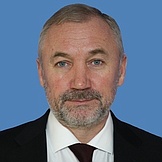Regional flags and emblems


PROFILE
Established – 30 September 2022
Capital – Genichesk (to November 2022 – Kherson)
Geography and climate
The Kherson Region is located in the south of the European part of Russia and has access to the Black Sea and the Sea of Azov. It lies in the steppe zone and is divided by the Dnieper River downstream into two parts – the right bank and the left bank. About 20 rivers flow across the region, with the biggest being the Dnieper and Ingulets rivers.
The climate is temperate continental and arid. The average January temperature is −2.1°С, and the average July temperature is 25.5°С. The average annual precipitation ranges from 320mm to 400 mm. The soil is mostly brown and dark brown chernozem. Alkali soil is typical for the shore of the Black Sea and the Sea of Azov.
Government
In accordance with the Federal Constitutional Law No. 8-FKZ, On the Accession of the Kherson Region to the Russian Federation and the Establishment of a New Constituent Entity of the Russian Federation, the Kherson Region, dated 4 October 2022, elections to the Kherson Regional Duma (legislative body) were held in September 2023 and 36 deputies were elected, running in the single republican electoral district in proportion to the number of votes cast for lists of candidates. The term of office of the Kherson Regional Duma is September 2028.
Legislative power of the Kherson Region is exercised by the Governor the Kherson Region, its government and other legislative authorities in the region.
The Governor of the Kherson Region is elected for five years by the deputies of the Kherson Regional Duma. The term of office of the current incumbent expires in September 2028.
Economy and natural resources
The Kherson Region has an advanced processing industry and agricultural sector. High-quality winter wheat, maize, rice and sunflowers predominate in crop production. Vegetables, melons and grapes are grown on large areas of irrigated land.
The region’s livestock breeding focuses on poultry and pig farming.


